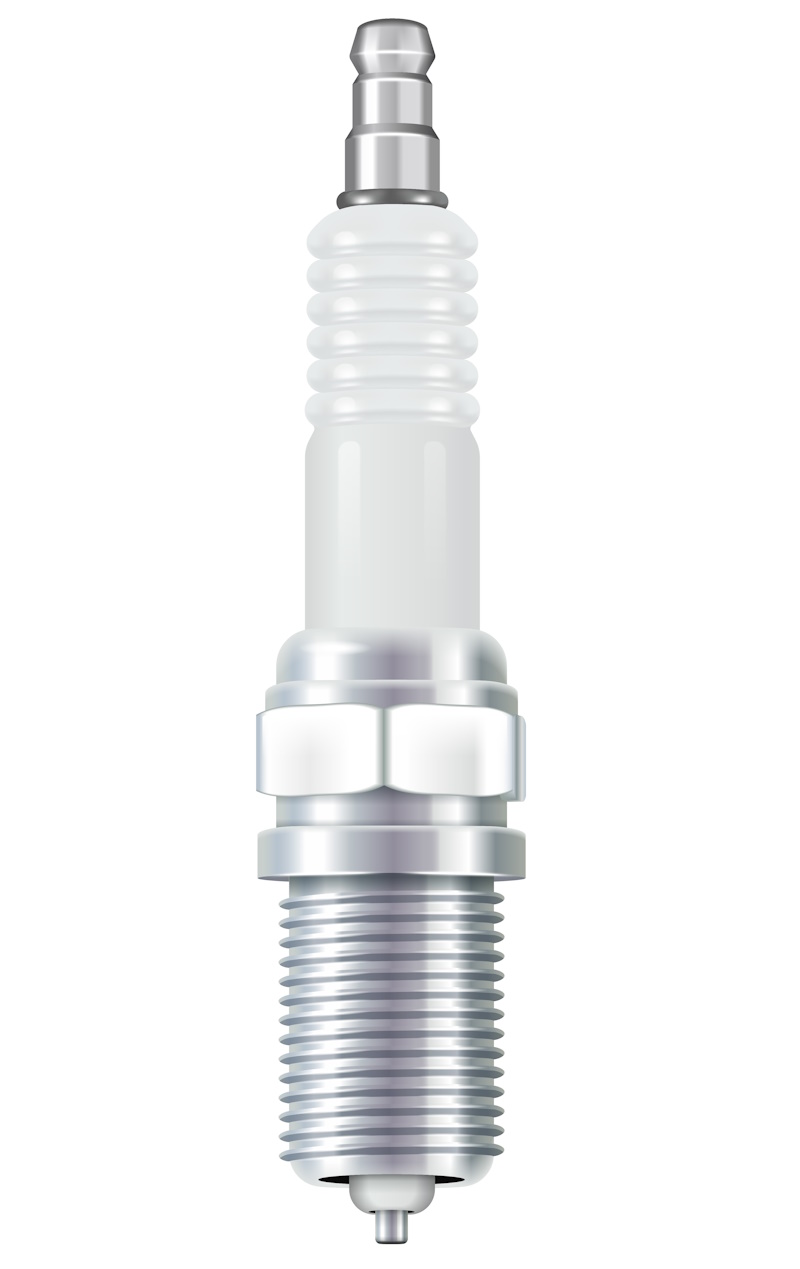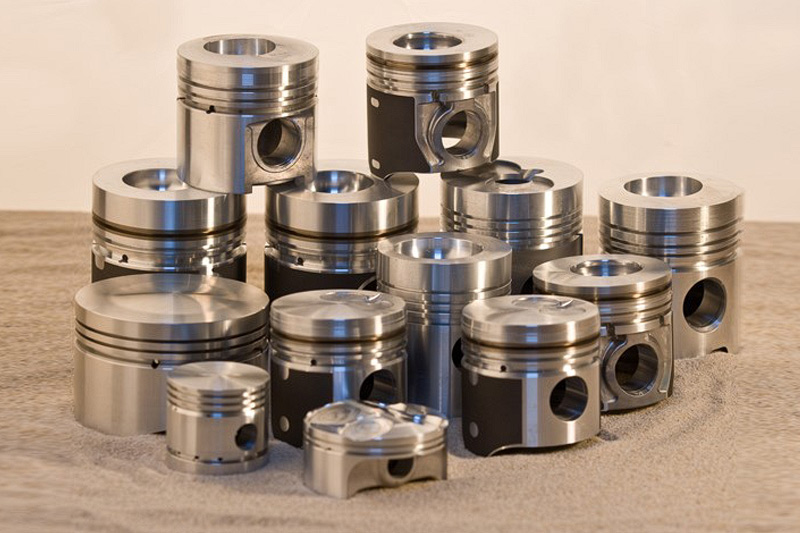Intake and exhaust valves
Intake and exhaust valves
Intake and exhaust valves isolate the combustion chamber and optimize gas exchange. Being in continuous motion – and under harsh tribological conditions as well as the influence of aggressive gases or exhaust – they are subject to natural wear. This can be accelerated by extreme conditions, such as mechanical or thermal overloads. Therefore, valves should fundamentally be replaced when any signs of damage are visible.
In our offer, you will find a wide selection of valves for agricultural and construction engines. Our advantage is our extensively developed catalog, thanks to which we are able to select valves based on their dimensions. We also have oversized valves available for many engines, which allow for savings on engine head replacement.
In the following article, we will delve deeper into the knowledge about the valves located in the engine cylinder head, which regulate the flow of the fuel-air mixture into the cylinder (intake/suction valve) and expel exhaust gases from the cylinder (exhaust valve). These valves play a key role in optimizing gas exchange in the combustion chamber. They require regular maintenance and, in case of visible signs of wear or damage, should fundamentally be replaced to ensure the correct operation of the engine.
- Intake Valves
- Exhaust Valves
- How to Distinguish Between Intake and Exhaust Valves?
- Intake and Exhaust Valves: What Has Failed?
- Replacing Cylinder Head Valves
Intake Valves
Intake Valve: Role in the Engine
The intake valve, also known as the inlet valve, plays a crucial role in the combustion process of a car engine. Its main functions include:
- Airflow regulation: The intake valve controls the amount of air that is drawn into the engine’s combustion chamber. The right amount of air is key for the fuel-air mixture that is to be burned in the engine’s cylinders.
- Optimizing combustion: By controlling airflow, the intake valve aids in optimizing the combustion process of the fuel-air mixture in the combustion chamber. A properly functioning intake valve contributes to efficient combustion, which in turn affects the engine’s performance and efficiency.
- Startup timing regulation: The intake valve also influences the engine’s startup moment by controlling the air flow to the combustion chamber. Proper intake valve settings are essential for smooth and efficient engine operation, especially during startup.
- Impact on performance: By controlling airflow, the intake valve significantly influences engine performance, including its power, torque, and fuel consumption.
The intake valve is a key component of the engine’s air intake system, ensuring proper air access to the combustion chamber for optimal combustion and engine efficiency.
Symptoms of a Damaged Intake Valve
A damaged intake valve in a car can present various symptoms, which may indicate different problems in the intake system or engine. Unfortunately, none of them are unequivocal and unique only to the intake valve issue. Here are some potential symptoms of a damaged intake valve:
- Low engine performance: A damaged intake valve can restrict the amount of air entering the combustion chamber, leading to a drop in engine power and responsiveness to the gas pedal.
- Irregular engine operation: Intake valve issues can manifest as unstable engine operation, vibrations, or jerking during driving.
- Increased fuel consumption: A damaged intake valve can lead to a suboptimal fuel-air mixture, potentially increasing fuel consumption.
- Unstable idle: A damaged intake valve can cause unstable engine operation at idle or problems maintaining steady RPMs.
- Exhaust smoke emission: In some cases, a damaged intake valve can lead to suboptimal combustion of the fuel-air mixture, increasing exhaust emissions and smoke from the exhaust pipe.
- Engine light activation: If the intake valve is damaged, the car’s computer may register an error and activate the Check Engine Light.
If you experience any of these symptoms, it is advisable to consult with an experienced automotive mechanic who can diagnose and determine the actual cause of the problem with the intake valve and take the appropriate repair steps.
Cleaning Intake Valves and Air Channels
The frequency of cleaning intake valves and air channels largely depends on the type of engine, fuel type, operating conditions, and the quality of engine oil. In some cases, cleaning intake valves may be necessary every few tens of thousands of kilometers, while in other engines, it may be needed less frequently.
Cleaning intake valves and air channels becomes necessary when there is an accumulation of contaminants, deposits, or soot in these areas, which can lead to various engine operation issues.
Cleaning intake valves and air channels is a more advanced process and requires some knowledge and proper equipment. Here’s a general guide on how to do it:
- Intake manifold disassembly: To access the intake valves and air channels, it’s usually necessary to remove the intake manifold. This requires the disassembly of other components, such as the air inlet and hoses.
- Cleaning valves and channels: After removing the intake manifold, appropriate cleaning agents can be used to remove buildup from the intake valves and air channels. A brush or soft brush can also be used for mechanical removal of contaminants.
- Cleaning the intake manifold: The intake manifold can also be dirty, so it should be thoroughly cleaned. Special cleaning agents and compressed air can be used for this purpose.
- Assembly: After thoroughly cleaning the intake valves, air channels, and intake manifold, all components should be reassembled according to the manufacturer’s instructions.
Performing the cleaning of intake valves and air channels by yourself can be complicated and time-consuming. Therefore, if you lack experience in such work or do not have the appropriate tools and equipment, it may be better to consult with a professional automotive mechanic. A professional will be able to perform the cleaning of intake valves and air channels effectively and safely for the engine.
The cost of cleaning intake valves and air channels in Poland can vary depending on several factors, such as the car’s make and model, the extent of contamination, the workshop’s location, and the mechanic’s experience and reputation. However, on average, you can expect the cost of this service to range from several hundred to even a few thousand zlotys.
Exhaust Valves
Role of the Exhaust Valve
The role of the exhaust valve in an internal combustion engine is just as important as that of the intake valve. Here are some key functions and roles of the exhaust valve:
- Exhaust Gas Discharge: One of the primary functions of the exhaust valve is to enable the effective discharge of exhaust gases from the combustion chamber to the vehicle’s exhaust system. The exhaust gases, produced during the combustion of the fuel-air mixture in the engine cylinders, must be efficiently removed from the exhaust system to avoid environmental pollution and disruption of the engine’s operation.
- Exhaust Pressure Regulation: The exhaust valve assists in regulating the exhaust pressure in the combustion chamber and exhaust system. By controlling the timing of opening and closing the exhaust valve, it’s possible to maintain optimal exhaust pressure, which can impact the engine’s performance and efficiency.
- Noise Reduction: The exhaust valve can also help in reducing noise from the exhaust system by controlling the flow and speed of the exhaust gases. Through the proper design of the exhaust system and exhaust valve, it’s possible to reduce the noise level emitted by the engine.
- Emission Control: By controlling the timing of opening and closing the exhaust valve, it’s also possible to regulate the engine’s exhaust emissions. Proper regulation of the exhaust valve can help in reducing the emission of harmful substances into the atmosphere.
The exhaust valve is, therefore, an essential element in the exhaust system of every internal combustion engine. Its proper functioning is key for optimal engine performance and for controlling exhaust emissions.
Symptoms of a Damaged Exhaust Valve
A damaged exhaust valve can present various symptoms that may indicate problems in the exhaust system or the combustion chamber of the engine itself. Here are some potential symptoms of a damaged exhaust valve:
- Increased Exhaust Emissions: If the exhaust valve is damaged or malfunctioning, it can lead to increased exhaust emissions from the exhaust system. This may be evident through black smoke or an unpleasant smell of exhaust gases.
- Noise from the Exhaust System: A damaged exhaust valve can cause concerning noises from the exhaust system, such as buzzing, whistling, or knocking sounds.
- Decrease in Engine Power: A malfunctioning exhaust valve can limit the engine’s performance by impeding the discharge of exhaust gases from the combustion chamber. This can lead to a decrease in engine power and vehicle performance.
- Irregular Engine Operation: Issues with the exhaust valve can lead to unstable engine operation, vibrations, or jerking during driving.
- Activated Engine Light: In some cases, damage to the exhaust valve can trigger the activation of the Check Engine Light or another error message in the vehicle’s diagnostic system.
- Increased Fuel Consumption: A malfunctioning exhaust valve can affect the proportions of the fuel-air mixture, which can lead to increased fuel consumption.
If you experience any of these symptoms, it’s advisable to consult with an experienced automotive mechanic who can diagnose the exhaust system and determine the cause of the problem with the exhaust valve, and take appropriate repair steps.
How to Distinguish an Intake Valve from an Exhaust Valve?
Distinguishing an intake valve from an exhaust valve in an internal combustion engine can be quite straightforward if you have access to the cylinder head or exhaust system. An old, tried-and-true method of distinguishing valves was using a magnet – intake valves were attracted to the magnet, while exhaust valves were not. However, we can’t guarantee the full effectiveness of this method today. Here are some features that can help you identify each of these valves:
| Feature | Intake valve | Exhaust valve |
|---|---|---|
| Location | Usually closer to the air intake of the engine, on the side of the cylinder head, near the intake manifold. | Usually closer to the exhaust outlet, at the end of the cylinder head, near the exhaust manifold. |
| Shape of the Cylinder Head | Typically has a larger cross-section to allow for pushing a greater amount of the fuel-air mixture into the combustion chamber. | Usually a slightly smaller cross-section to facilitate the free discharge of exhaust gases from the combustion chamber. |
| Direction of Flow | Allows for the flow of the fuel-air mixture into the combustion chamber. | Allows for the discharge of exhaust gases from the combustion chamber to the exhaust manifold. |
| Cylinder Numbering | Often marked in service manuals or engine documentation. | Often marked in service manuals or engine documentation. |
| Valve Markings | Sometimes contain markings indicating that they are intake valves. | Sometimes contain markings indicating that they are exhaust valves. |
If you have doubts about identifying the valves in your engine, you can always consult the vehicle’s owner’s manual or an experienced automotive mechanic, who can help you identify and understand the differences between the intake and exhaust valves in your specific engine.
Intake and Exhaust Valves: What’s the Malfunction?
Some symptoms of valve damage can be similar, but certain symptoms of damage to the intake and exhaust valves may differ due to their different roles and functions in the engine.
| Symptoms of Damage | Intake Valve | Exhaust Valve |
|---|---|---|
| Engine Power Loss | Yes | Yes |
| Irregular Engine Operation | Yes | Yes |
| Uneven Idle | Yes | Yes |
| Increased Fuel Consumption | Yes | Possible, but less typical |
| Activated Engine Light | Yes | Yes |
| Noise from the Exhaust System | No | Yes |
| Engine Starting Problems | Yes | Less common |
| Increased Exhaust Emissions | No | Yes |
| Noticeable Exhaust Smell in the Cabin | No | Yes |
| Issues with Exhaust Discharge | No | Yes, especially at low speeds |
The table presents both similarities and differences in the symptoms of damage to the intake valve and the exhaust valve. This helps better understand the problems that may occur with each of these valves and how they affect the operation of the engine and the vehicle’s exhaust system.
Head Valve Replacement: How Long Does It Take, How Much Does It Cost?
The time required to replace engine head valves can vary depending on the type of car, the engine type, and the complexity of the work involved. In a typical engine head valve replacement process, the steps include:
- Problem Diagnosis: The first step is diagnosing the problem that may require valve replacement. Typical symptoms of damaged valves include loss of engine power, irregular operation, or compression issues.
- Head Disassembly: The mechanic begins by disassembling the engine head. This requires removing external engine elements such as the intake manifold, exhaust manifold, timing belts, and disassembling the head itself.
- Head Inspection: Before replacing the valves, the head must be thoroughly inspected for any damage, leaks, or wear.
- Valve Removal: The mechanic then removes the damaged valves from the head. This process involves various removal techniques depending on the design and accessibility.
- New Valve Installation: After the old valves are removed, the mechanic installs new ones. The valves should be precisely fitted and placed in the head according to the manufacturer’s recommendations and tolerances.
- Valve Adjustment: After installing the new valves, the mechanic adjusts their clearance, which is important for the proper operation of the engine and ensuring the right compression.
- Head Assembly: After valve replacement, the head is mounted back onto the engine block. This complex and precise task requires proper timing alignment, head sealing, and assembly of all components according to the manufacturer’s recommendations.
- Testing and Adjustments: After assembling the engine head, tests are necessary to ensure everything is working correctly. It’s also important to check for any leaks, ensure the valves are operating correctly, and that the engine achieves the required compression.
The process of replacing engine head valves is complicated and requires the right experience and tools. Therefore, it is usually performed by experienced mechanics in professional automotive workshops. The time for replacing engine head valves can vary depending on the car model, part availability, and any additional problems that may arise during the repair process. The cost of this type of repair can be significant, ranging from several hundred to several thousand złotys, including the cost of parts and labor.
Podobne wpisy

Silicone-Based Sealant Mass
Try a neutral, silicone-based sealant for electric and hybrid vehicles. It’s an ideal solution for protecting electrical system components in […]

Spark/Ignition Plugs
A spark plug is a fundamental and one of the most important components of the ignition system. Its condition affects […]

Pistons in the engine
In a motorized system, the crankshaft must rotate to convert combustion energy into mechanical energy. Here is the piston that […]